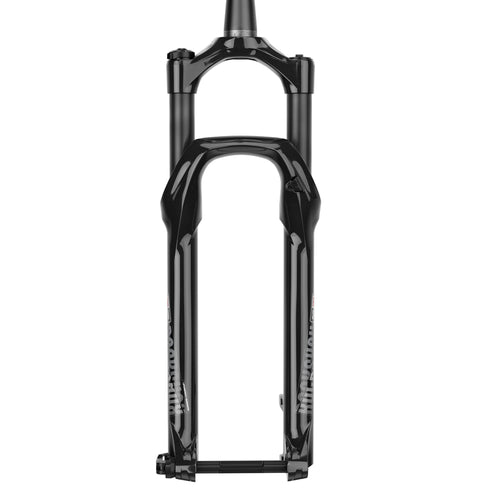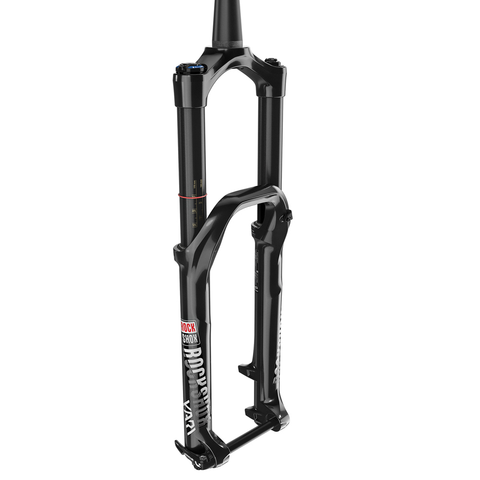What's the carbon suspension forks
Why buy carbon suspension forks
Buying an carbon suspension fork is a great way to boost your mountain bike's capabilities. When purchasing a carbon suspension fork, there are various features you'll need to look out for to make sure that the fork will work with your bike. You can't simply buy the one you like the look of or the one with the best discount. You need to buy the correct carbon suspension fork, otherwise you'll have spent a lot of money on a downgrade for your bike.So if you want to buy a suitable carbon forks,you should know the things below.

Notice your suspension fork travel size
Travel is the most important feature on a carbon suspension fork. It is not there to keep you comfy, as many people believe, but there to help keep your front wheel in contact with the ground. With a correctly working fork, your front wheel will be tracking the ground and keeping you in control and, more importantly, upright.
Now, you might then be thinking about the bigger travel size. The more likely your wheel is to stay in contact with the ground. The issue here is that most carbon bike frames are designed for a specific travel size. Going outside that amount can have a negative influence on handling, and at worst, rip your head tube off.
The amount of travel is also linked to what niche the mountain bike is designed to be used. Please take a look at our quick guide for the MTB travel size.
- Dirt Jump/ Pump Tracks – 80 – 120 mm
- Cross Country – 100 – 120 mm
- Trail – 120 – 140 mm
- Enduro – 150 – 180 mm
- Downhill – 200 mm +
These are rough rules, and as with all rules, they are designed to be broken.
Match Your Bike Wheels size
Carbon mountain bikes tend to use three wheel sizes. You'll find 26" wheels on dirt jump, pump track, and entry-level bikes. Then you'll have a choice of 27.5" (650b) or 29" wheels. You'll need to make sure you get the correct one for your bike as the handling will have been designed around that wheel size.
Choose the Steerer styles
Once you know roughly how much travel and wheels size you need, filter through forks by their steerer option. Over recent years this has become easier as most mountain bikes will now have a headtube designed for a tapered fork.
The older 1/8" style will mainly be found on entry-level bikes. You can fit a 1/8" fork in a bike with a tapered head tube using a crown race adaptor. You can't fit a tapered fork on a 1/8" headtube.
Choose the right Thru Axle
Thru Axles come in three different circumferences and two different widths. The three circumferences are 9 mm quick release, 15 mm thru-axle (sometimes referred to as bolt-on), and 20 mm thru-axle. A 9 mm quick release will now be more common on older bikes and entry-level bikes. 20 mm thru-axles will mainly be found on downhill and dirt jump bikes. The majority of bikes will come with a 15 mm thru-axle.
Then it would be best if you looked at width. The standard front-wheel width is 100 mm. All quick release wheels will have this width. 15 and 20 mm axles can also come in Boost width, which is 110 mm.
Then it would be best if you looked at width. The standard front-wheel width is 100 mm. All quick release wheels will have this width. 15 and 20 mm axles can also come in Boost width, which is 110 mm.
Brake Mounts
Knowing what style of brake mounts come on the fork will not be a deal-breaker. It is best to know what style of mount you have to make sure you have the correct adaptors at home to fit your brake. The two main types are I.S or post mount. It is more than likely you'll be dealing with post mount as most manufacturers have been phasing out I.S.

Focus On Carbon Suspension Fork Features
Once you have the correct specs you need for a fork, it is worth looking at fork features to get the best bang for your buck.We need to compare the different parameters of carbon fork to find the most suitable affordable one.
Carbon Fork Weight
The easiest way to save weight is to make sure that you get an air-sprung fork over a coil-sprung fork. The majority of coil-sprung forks will be at the bottom of the market, with a few exceptions, such as MRP. Air forks will not only be lighter, but it will be easier to self-tune for your weight at home.
If you want to build the ultimate XC whippet, it might be worth looking at getting a fork with a carbon fiber crown and steerer. The weight you will drop here will make a noticeable difference to your bike.

The Lockout
You'll hear people talk about lockout on carbon suspension forks. The idea is that you can lock your fork out to stop your suspension from moving. The idea is to replicate a rigid fork. The reason for this is to make climbing easier. It is also worth noting that no suspension fork truly locks out. They still have a little travel, so you don't blow out the internals by accidentally hitting a big hole.
You can then look for forks that have a remote to mean you can lockout your bike as you ride along. A feature that can be as useful as a dropper post but gets a little bit less love from everyone. It is particularly great if your racing XC or after local KOMs.
Not all brands call this feature lockout. Fox, for instance, calls their system CTD. You can then select from Climb, Trail, Descend settings. Climb is their version of a lockout setting. A lockout is generally a compression setting. You'll find that many higher-end forks come with various settings that you can fine-tune—the highest-end forks offering you the ability to fine-tune both high-speed compression and low-speed compression.

Rebound
As with compression, setting your rebound will have fewer options on lower-end forks. High-end forks will again allow you to fine-tune between both high-speed rebound and low-speed rebound. You'll be able to tune both rebound and compression at home but make sure you understand their fundamental principals to set them correctly. If you get this wrong, it doesn't matter how much you've spent on a fork; you'll have issues on the trail.
Trail and Offset
With most carbon suspension forks, you'll see a figure listed for trail and offset. It is easy to overlook this detail when you're talking about Motion Control or Kashima coating, but it will have a big effect on your bike's handling.
Offset is how far your fork's axle is offset from the steering axis. To understand trail, you need to draw a line straight through your head tube to the ground, following the angle of your head tube. Your trail is then the contact patch from your tire to where our head tube angle line hits the ground in front of it.
The easiest way to understand the difference is a longer offset (which makes a shorter trail) means that your bike will be more stable at low speed and twitchy at higher speeds. A shorter offset (longer trail) will make your bike more stable at high speeds, and a little cumbersome at slow speeds. Follow the advice of your frame's manufacturer on which fork style to get.
Conclusion
Once you understand the above factors about carbon bike fork, you will easily choose a carbon bike fork that suits you. There are many matching carbon bike forks on the market for you to choose from.
Buy the carbon fork online now
Tips:Many carbon bike forks are out of stock.If you want to wholesale carbon forks,please contact us.
